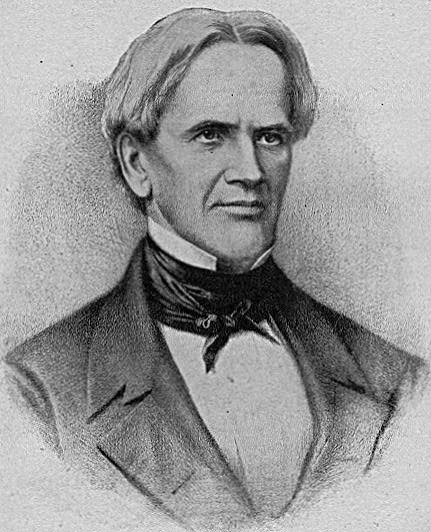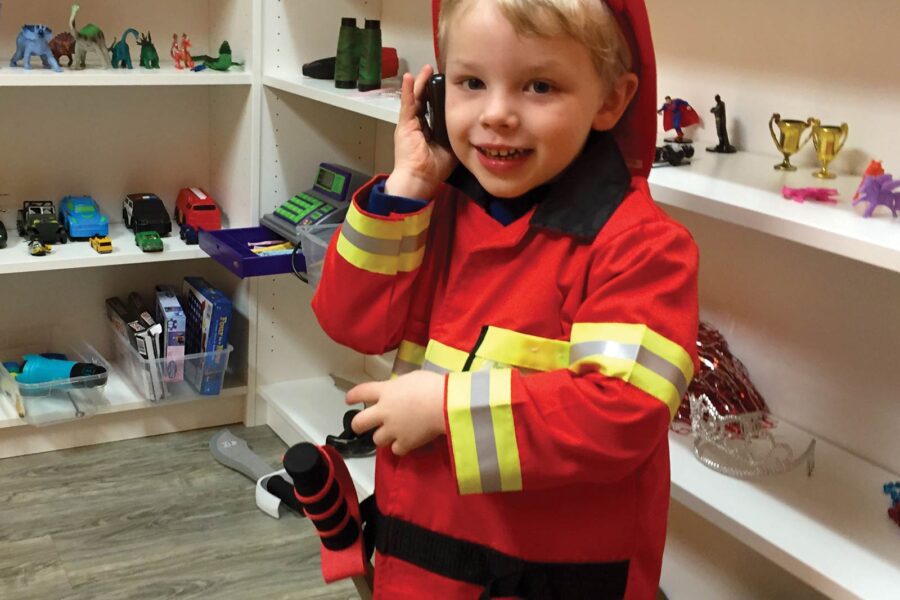“Art transcends language. It is a global way of communicating,” said Janice Hoshino, a registered and board certified art therapist and a licensed marriage and family therapist who is the director of Antioch’s Creative Arts Therapy Institute.
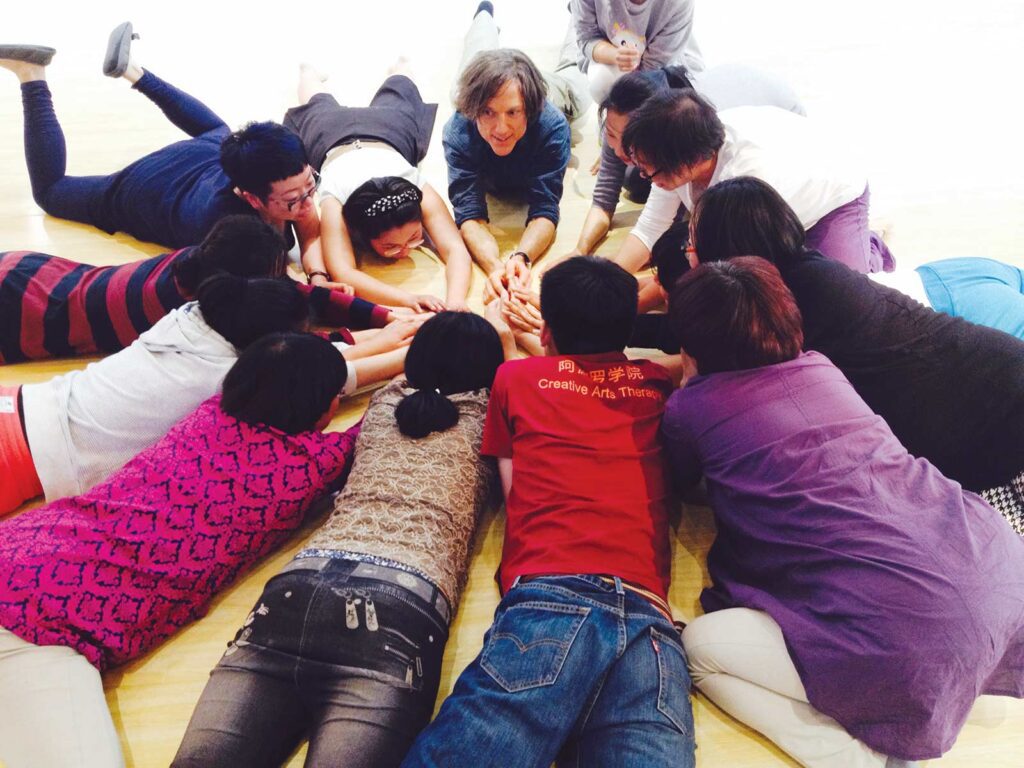
Janice Hoshino launched the art therapy program at Antioch’s Seattle campus in 1998, which has since expanded to include drama therapy, a play therapy certificate, and most recently, a low-residency dance therapy program which expands a long-time existing program at Antioch’s New England campus.
Graduates are eligible to become registered art, drama, or dance/movement therapists as well as licensed clinical mental health counselors or marriage and family therapists. Hoshino added that students are able to work from a spectrum of verbal or completely nonverbal with their clients using creative tools.

“Research suggests that the creative art therapies are the most effective way to heal trauma because trauma has to work its way through the body,” says Hoshino.
One of the strengths that graduates come away with as clinicians is the ability to serve people for whom talk therapy may not be the best option, such as young children, people for whom English is not their first language, those with various mental illnesses, or other marginalized or disadvantaged populations.
“I do think that there are limitations with certain marginalized populations and that talk therapy may not be the best conduit to work with them,” says Hoshino. “Our vision is to teach our graduates how to serve people as broadly as possible.”
Art Therapy
A Tool to Help Children Heal from Trauma

For Ashley Mason, a board-certified art therapist, licensed marriage and family therapist, and affiliate faculty member, Art Therapy is a powerful tool to help children heal from trauma. Mason specializes in working with children aged 0 to 8 within the context of the family system and shares that background with graduate students.
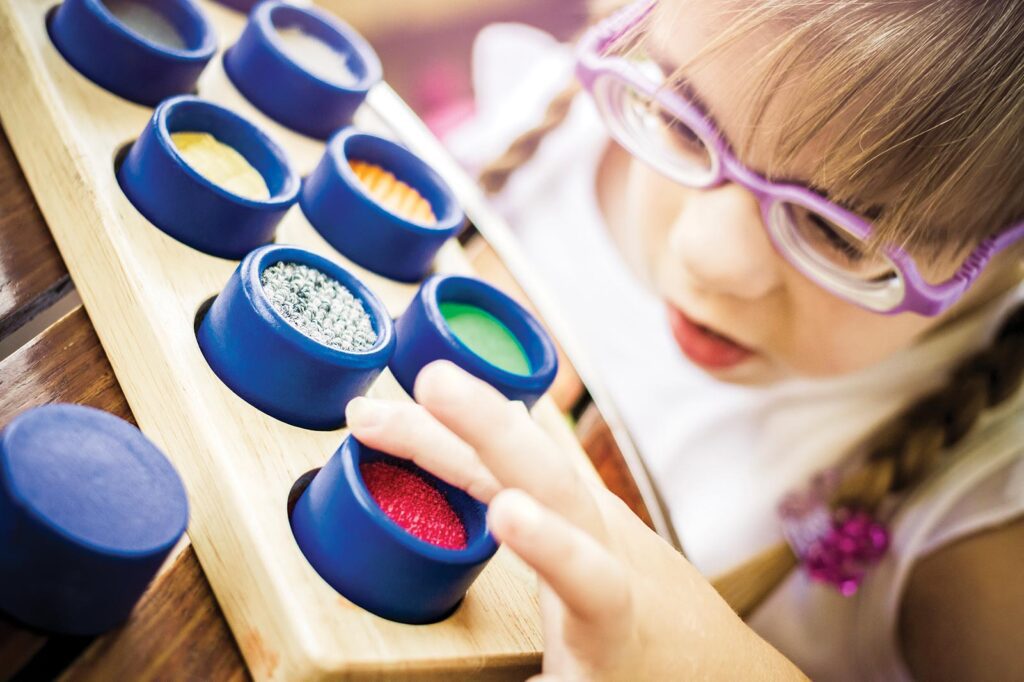
Mason’s courses include Family Group Art Therapy, an applied class where students practice their skills in mock therapy groups, and Development and Treatment Models in Art Therapy, which examines childhood development, how trauma impacts it, and how therapy can assist in healing that trauma.
Mason says these courses can help to “open the door to students who aren’t aware of infant or early childhood mental health.”
“Art Therapy can be an ideal therapeutic tool for young children who have not yet developed verbal skills by giving them a way to communicate and express their experiences,” Mason says.
In neurological development, memories are stored in visual centers. Expressing those memories visually can help people go deeper. For children, that means using art supplies that they are already familiar with, like quick-dry-clay, found items that can be used to create collages, and crayons.
“When we speak verbally we have many more filters. Visual expression surpasses many of those filters,” Mason says.
The Art Therapy program, like all of the Creative Arts Therapy programs, aims to increase students’ awareness of systemic injustice and how it impacts them and their clients.
It was this mission that drew Kaitlyn Camp to the program, after growing up in a small town in Alabama, where she says she had a “very narrow view of the world.”
“I wanted to broaden my understanding of the world in a more holistic way,” Camp says. “Art Therapy is a career that embodies unconditional positive regard, a stance in which you are unbiased and completely present with the client no matter personal differences. You absolutely need that multicultural lens to be a successful art therapist.”
Students like Camp will go on to work in community mental health agencies, among other facilities, during their internships, which gives them experience with clients from diverse ethnic and socio-economic backgrounds.
Students also have an opportunity to practice internationally with trips to Guatemala and Nepal, which help them go outside of their comfort zone while learning how they can use their tools across cultural boundaries.
“We really try to help students become active learners and engagers in the world around them,” Mason says. “Art Therapy can do that because it is cross-cultural and in every society you will find some kind of artistic expression so this allows art therapy students to learn about a variety of cultures.”
Dance | Movement Therapy (DMT)
DMT Creates an Environment to Support Students and the Community.
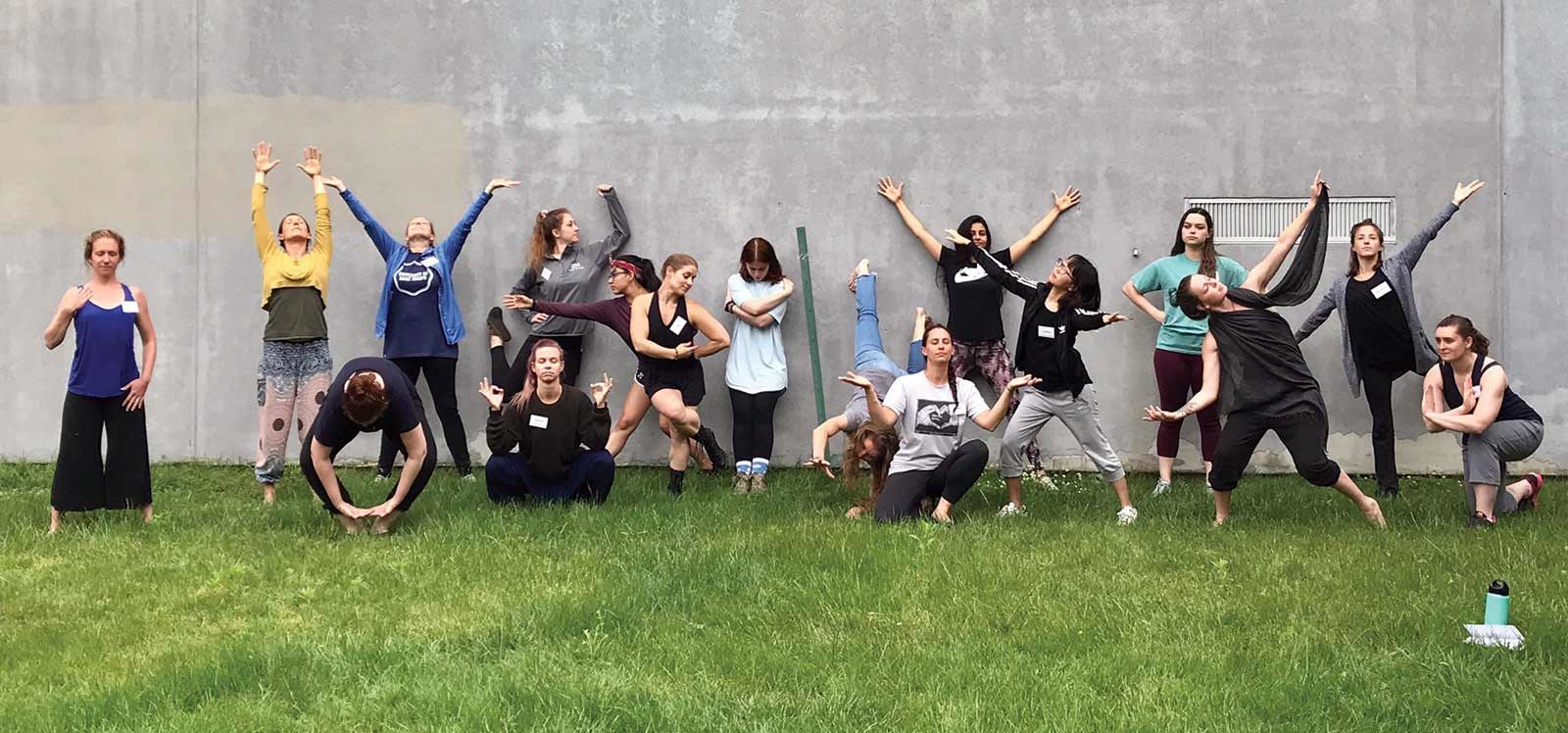
Tomoyo Kawano, who has taught at Antioch for two years and served as the program’s director for the last year, says this supportive atmosphere is what drew her to the campus.
“I really love the community-oriented, nurturing environment,” Kawano says. “All of the faculty are really invested in supporting the students and we check in and take care of each other to grow personally and professionally.”
The community support includes small class sizes, with about 25 students each year, and mentorship across cohort levels in the three-year program. Domonique Terrell will be a third year student and can attest to that feeling at the school.

“With the smaller class, I feel that I can really take my time and deepen my understanding of the material,” said Terrell. “We support each other and that’s what makes it worth it.”
Instruction and practicums are at the core of the program, which was founded in 1976 to prepare students to be psychotherapy professionals who use dance and movement to work with people in a variety of settings and with varying degrees of challenges.
The training is grounded in the core principle of self-transformation through embodied, lived experience with curriculum that emphasizes nonverbal and verbal principles, theories, methods, and techniques. Students learn about movement assessment as a key component to understanding health and informing client conceptualization and treatment approaches.
The program is one of only six master’s level programs in the United States that are approved by the American Dance Therapy Association, and it was among the first to receive that accreditation.
Recently, the program partnered with Antioch’s Marriage and Family Therapy department to give students more flexible licensing and career prospects.
The program is also connected to the wider dance therapy community through intensive multi-day workshops in the winter and summer. Through the workshops, people with an interest in dance therapy can learn about the profession, and those who already have a master’s degree may apply the summer training to a low-residency dance/movement therapy certificate, using online and in-person work to complete it.
Giving back to the wider community is another key component of the program, with its organization of a flash mob during the past seven years for One Billion Rising—a movement which aims to raise awareness about gender-based violence. Kawano says each year the campus’ participation has grown, sustaining Antioch’s social justice values.
“Dance can raise awareness of social justice issues and lift the voices,” says Kawano.
Drama Therapy
Students use Improvised Play to Help People Heal and Transform
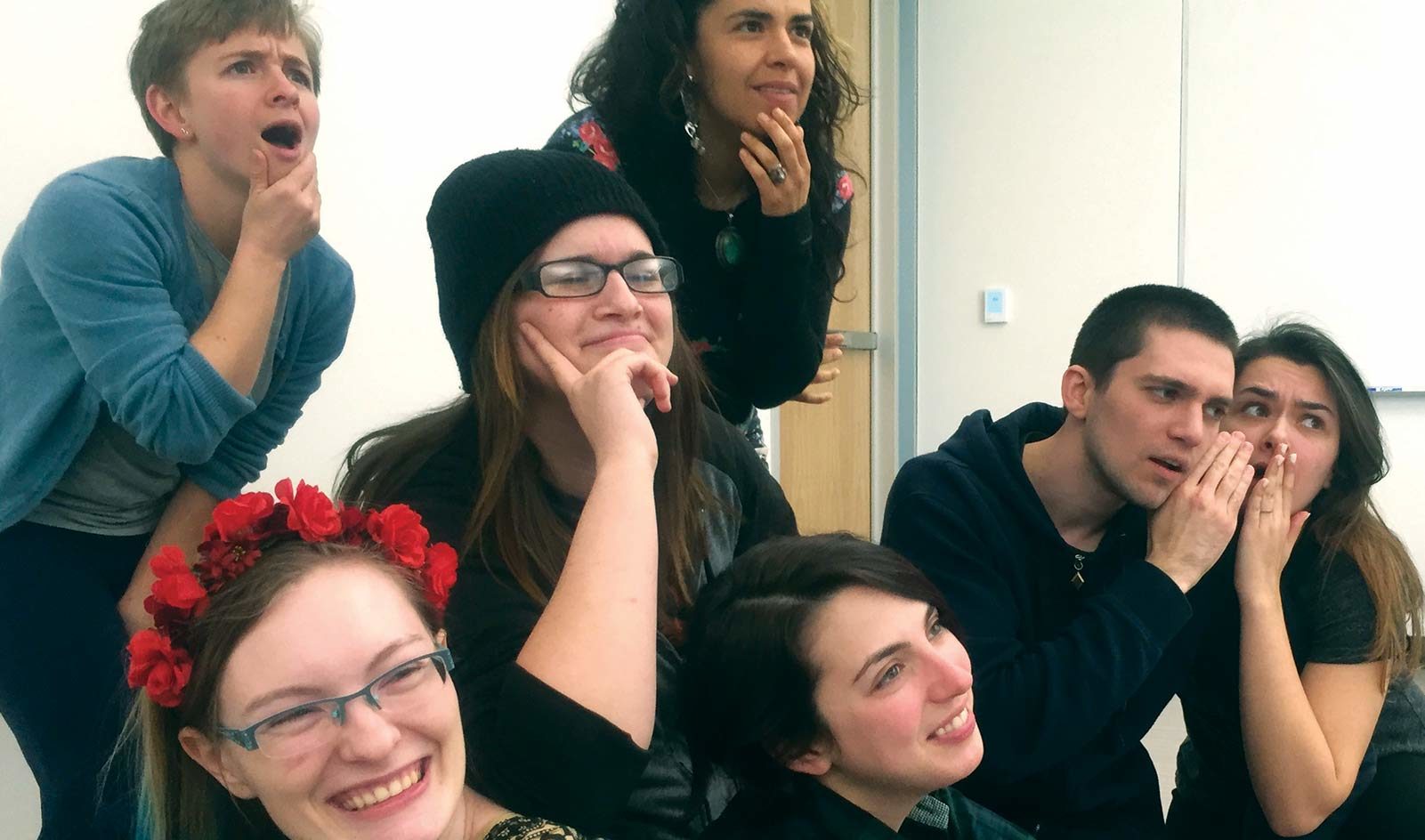
A growing number of Drama Therapy students at the Seattle campus are learning how to use theatrical-style improvised play to help people work through trauma, change their lives, and ultimately heal the world.
The Drama Therapy program, one of only five such programs accredited by the North American Drama Therapy Association, prepares students to become registered drama therapists, while also gaining licensure as mental health counselors or marriage and family therapists.
As coordinator of the program since 2016, Fred Landers brings an expertise in Developmental Transformations (DvT)—a form of drama therapy in which therapists and clients play together, improvising movements, sounds, pretend objects, and roles in theatrical scenes that change continuously as the clients’ interest in them transforms.
Using exaggeration and other theatrical techniques, the therapist and clients distinguish between pretend and real elements, ensuring that their play together is ethical and therapeutic. Rather than stopping the play to verbally process what they are experiencing, clients process feelings and thoughts during the play by altering how they are playing their roles.
The fact that DvT is a relatively new form of therapy, along with the Drama Therapy program’s achievement of full accreditation in 2018, may be responsible for the rapid growth in the number of students entering the program, from four in 2017, to eight in 2018, to 16 in 2019.
Pella Schafer Weisman, who has taught in the program for one year, brings an interest and knowledge of a Drama Therapy practice known as Healing the Wounds of History. Clients use this method to work through historical or intergenerational trauma.
In an exercise in the Introduction to Drama Therapy course, Schafer Weisman has students research the history of an ancestor, imagine what it would have been like to live during their generation, and then reenact those experiences. Healing the Wounds of History is the creation of Armand Volkas, who has received international recognition for bringing together members of groups that have historically been in conflict, such as Germans and Jews; Palestinians and Israelis; Japanese, Chinese and Koreans; Armenians and Turks; and African-Americans and European-Americans, to name a few.
Schafer Weisman said the Drama Therapy program as a whole has a strong social justice lens and its professors and graduates are focused on how systemic externalized oppression affects clients.
“If you help individuals transform their relationship to these oppressive systems, then the systems will also change,” says Schafer Weisman.
Landers said Drama Therapy students usually invent this form of healing on their own before coming to Antioch, combining strong interests in theatre and therapy, with many of them feeling like they’ve found their community at Antioch. Graduates of the program continue to serve the university’s mission, by working in community mental health centers, in-school clinics for children, nursing care facilities for veterans, and chemical dependency recovery clinics, among many others.
“Trauma and all of our experiences are stored in our bodies,” says Schafer Weisman. “We can access and transform experiences through our bodies in ways that go beyond words. You aren’t just sitting and talking, you are able to do a level of work that goes deeper.”

